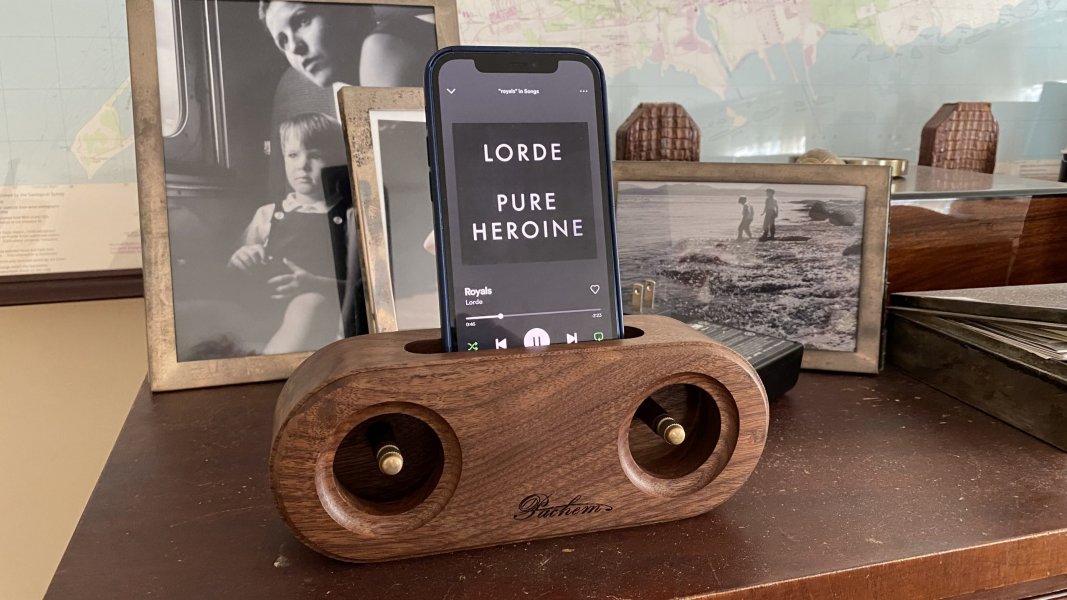In his blog today Paul McGowan, of PS Audio, posted a a piece on horn loudspeakers:
Horns Are Good Because…
August 22, 2022
by Paul McGowan
In one of my YouTube videos, I railed against the sound of horns and how they are difficult for me to adjust to. They simply sound unnatural until my brain adjusts.
Of course, that spurred a raft of opposition from horn lovers defending their turf (as it should).
One of the long time beliefs about the superiority of horns involves their efficiency. Most horns are super efficient and require only a few watts of amplifier power to play loudly. Years ago in the era of small amplifiers that was a big deal. Today, not so much.
Yes, amplifier headroom is essential. When big amps like the BHK600 or the Stellar M1200 monoblocks power an 87dB sensitive pair of dynamic loudspeakers, they sound superior to other, smaller wattage amplifiers.
Rarely do these big amps output even 1/10th of their power capability and, into a 97dB horn, considerably less. That fact does not obviate the need for oversized amps that work within their ultra-linear range (typically about 10% of the total amp capabilities).
But, that said, the idea of a horn’s superiority because of less strain and distortion presented to its connected power amplifier is a thing of the past when a big amplifier maybe cranked out 20 watts.
Old notions from the past stay with us into the present day.
I responded:
For many of the commenters here, I am afraid this is a classic case of “you don’t know what you don’t know.”
1) Horn loudspeakers are just as varied in sonic attributes as are any other topology of loudspeaker, including dynamic drivers in boxes.
Only a Boomer-type mentality would conclude having heard one loudspeaker with a horn-type driver that he knows everything there is to know about horn loudspeakers.
2) The first 18 watts of the PS Audio BHK600 or the Stellar M1200 monoblocks do not sound on very sensitive loudspeakers like the first 18 watts of a Lamm ML2 SET amplifier or of an Absolare SET amplifier.
3) The attraction of many audiophiles to horn loudspeakers is not merely the efficiency specifications. It is, among other attributes, the life-like dynamics and energy which certain horn loudspeakers can reproduce.
PS: I do not own horn loudspeakers. But I have enough actual listening experience with them to understand fully why many audiophiles love them.
Horns Are Good Because…
August 22, 2022
by Paul McGowan
In one of my YouTube videos, I railed against the sound of horns and how they are difficult for me to adjust to. They simply sound unnatural until my brain adjusts.
Of course, that spurred a raft of opposition from horn lovers defending their turf (as it should).
One of the long time beliefs about the superiority of horns involves their efficiency. Most horns are super efficient and require only a few watts of amplifier power to play loudly. Years ago in the era of small amplifiers that was a big deal. Today, not so much.
Yes, amplifier headroom is essential. When big amps like the BHK600 or the Stellar M1200 monoblocks power an 87dB sensitive pair of dynamic loudspeakers, they sound superior to other, smaller wattage amplifiers.
Rarely do these big amps output even 1/10th of their power capability and, into a 97dB horn, considerably less. That fact does not obviate the need for oversized amps that work within their ultra-linear range (typically about 10% of the total amp capabilities).
But, that said, the idea of a horn’s superiority because of less strain and distortion presented to its connected power amplifier is a thing of the past when a big amplifier maybe cranked out 20 watts.
Old notions from the past stay with us into the present day.
I responded:
For many of the commenters here, I am afraid this is a classic case of “you don’t know what you don’t know.”
1) Horn loudspeakers are just as varied in sonic attributes as are any other topology of loudspeaker, including dynamic drivers in boxes.
Only a Boomer-type mentality would conclude having heard one loudspeaker with a horn-type driver that he knows everything there is to know about horn loudspeakers.
2) The first 18 watts of the PS Audio BHK600 or the Stellar M1200 monoblocks do not sound on very sensitive loudspeakers like the first 18 watts of a Lamm ML2 SET amplifier or of an Absolare SET amplifier.
3) The attraction of many audiophiles to horn loudspeakers is not merely the efficiency specifications. It is, among other attributes, the life-like dynamics and energy which certain horn loudspeakers can reproduce.
PS: I do not own horn loudspeakers. But I have enough actual listening experience with them to understand fully why many audiophiles love them.
Last edited:
















